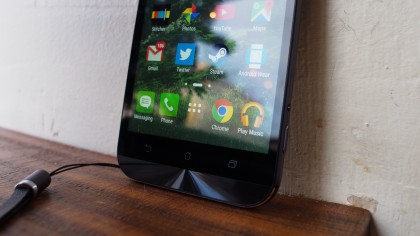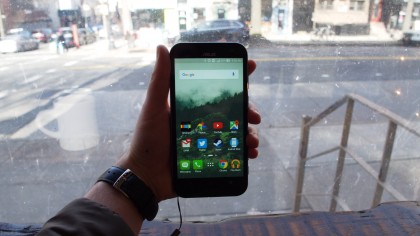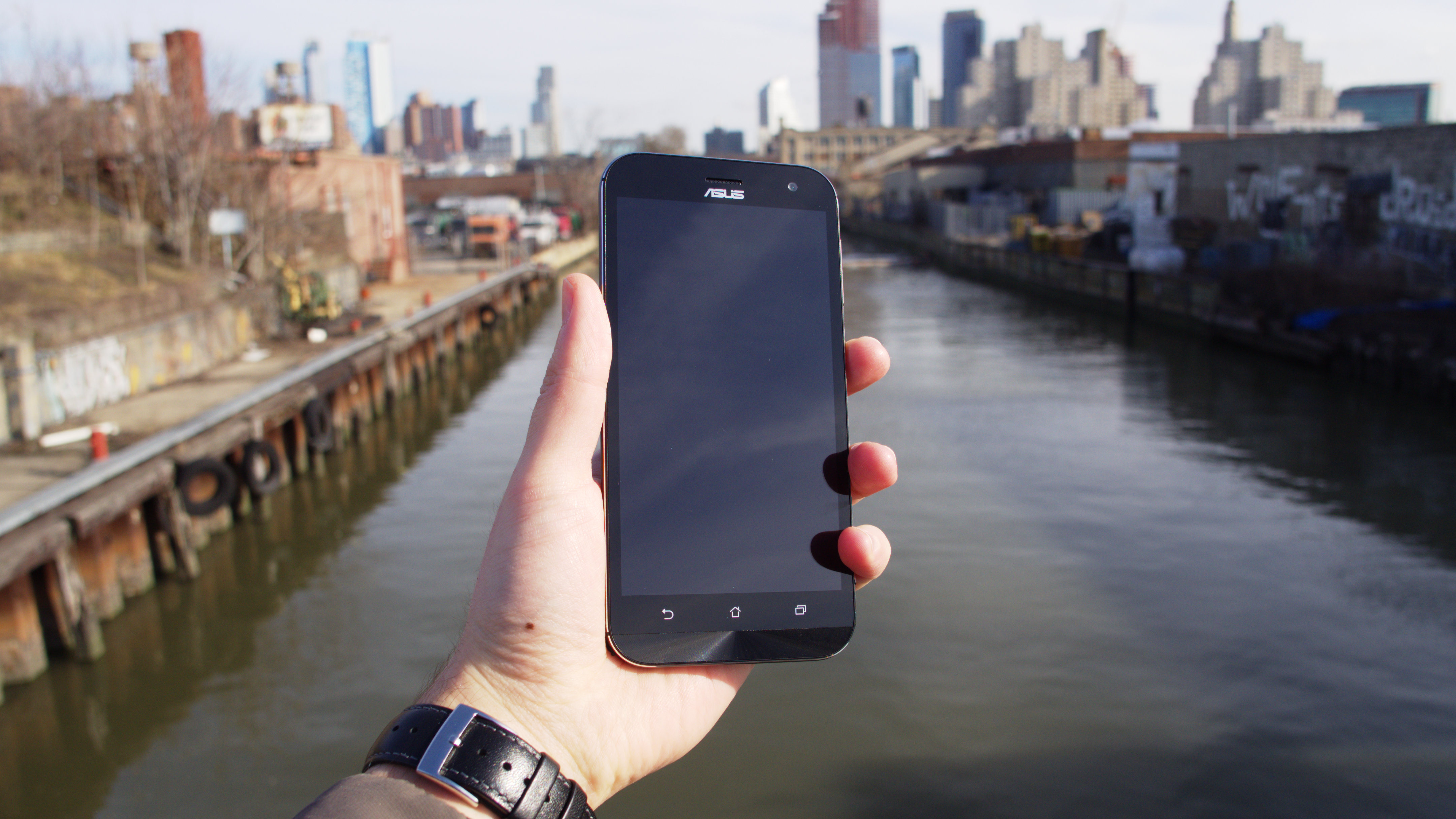Why you can trust TechRadar
Asus' latest batch of phones distance themselves from the Snapdragon-packing majority with an quad-core Intel Atom processor clocked at 2.3GHz and PowerVR graphics processing unit (GPU). And as we saw with the ZenFone 2, which also houses the same processor and GPU, the Zoom can't compete with the likes of the latest flagship phones, or even their previous iterations.
As you'll see soon, its performance in our benchmarks might be lackluster compared to our elite group of best smartphones, but it's no slouch.

The added 4GB of RAM helps to keep the Android 5.0 Lollipop experience flowing nicely, even when you have more apps running than you probably should. Although a few bullet points on the Zoom's spec sheet disappoint, this isn't one of them. Here, the phone is right on par with recent releases, including the Samsung Galaxy S7.
The Zoom comes with a generous 64GB of internal storage out of the box, but almost 10GB of it is reserved for the OS, along with Asus' heavy coat of ZenUI paint. Thankfully, there is a microSD slot underneath its removable leather back that allows for another 64GB of expandable storage.
Performance
Running the ZenFone Zoom through Geekbench 3, it averaged 2,840. This number, while not anywhere near what the latest phones can put up, shows that the Zoom will likely be powerful enough for most. It beats out the Samsung Galaxy S5, HTC One M8 and OnePlus One, but whether that's enough power for your needs is up to you.

The specs built into the ZenFone Zoom produce decidedly mid-range results during our benchmarks. But, during real world testing, they deliver a zippy experience, whether you're playing the latest 3D games available in the Google Play Store or just browsing through Twitter.
But whatever it is you end up doing for enjoyment, you probably want it to sound good, too, right? Like the quality of the camera in most phones, speaker placement and throughput is also a common area that manufacturers just can't seem to nail down.
This hefty phone could have benefitted greatly from (and seems to have more than enough room for) two front-firing speakers. Instead, the sole speaker is on the lower back back of the Zoom. It produces passable sound at a low volume, but you'll want to have a set of headphones, like the ones included with purchase, nearby for anything above a whisper.

Booting the phone up from an off-state takes a rather lengthy 53 seconds, but this isn't a problem for those, like me, who rarely power down their devices fully. That's only been a concern when a phone like the Nexus 6 took a minute and a half to turn on.
Call quality with the Zoom is crisp, coming through nicely at a range of volumes. The person on the other side of the call also didn't report any issues, nor could they tell when I switched from speakerphone and talked to the phone from across the room.
Android 5.0 Lollipop and ZenUI apps
In a perfect world, the line between Google's own stock Android operating system and each manufacturer's overlay would be blurred to the point of not noticing where one stops and the other begins. Unfortunately, like the ZenFone 2, that isn't the case with the ZenFone Zoom. There's a harsh divide between what's essential and what just gets in the way.
The Zoom comes with Android 5.0 Lollipop pre-installed and thankfully, ASUS claims it'll be updated to Google's latest, Android 6.0 Marshmallow, soon enough.

Regardless of the underlying OS, Asus' ZenUI is laid on thick. From the very first use of the phone, you're bombarded with pop-ups and a default layout that makes stock Android seem like a distant paradise. But, for newcomers, it's a good, albeit slightly overwhelming, crash-course into the world of Android.
Similar to Matt Swider's experience with the ZenFone 2, I actually did find that there were a few customization options that made my time with the Zoom enjoyable. The pull-down quick settings panel is filled with standard options, like switches for Bluetooth, Wi-Fi and Airplane mode. But, I appreciate the quirkier additions, like one-handed mode. This allowed my thumb to take a break by shrinking the screen's image down and moving it to wherever it's easier to reach.
ZenUI also offers a handy knock-to-wake feature, which became my primary method for unlocking the Zoom. Also, Asus' flavor of Android lets you craft customizable gestures to open apps straight from sleep mode. For instance, I set up the response for drawing the letter "C" on the screen to boot into Chrome. It's snappy, clever and it makes life easier.

Then, there's Glove Mode, which cranks up the touchscreen's sensitivity so that it will work better with a glove equipped. The other unadvertised perk of this mode is that it makes touching the screen with a wet finger much easier. This is crucial when I'm doing the dishes, but want to change the song playing through Google Music.
Speaking of music, another quick setting that I really enjoyed was AudioWizard. It's a ZenUI app that lays all the control for equalizer settings in your hands. You can create a unique sound for music, movies, games, but you'll need to remember to switch it on yourself. I applied some extra bass for my tunes and, while I'm the type who prefers to listen at near-reference levels of EQ, it sounded pretty awesome.
The Asus ZenFone Zoom comes with over 30 apps pre-installed, many of which are superfluous to the core experience of using the phone. But, that doesn't necessarily mean that they're all bad. There's a standard Asus-made app for weather, music, note-taking and the like. Most of them are just fine if you don't already have a preferred go-to option.
I'm partial to very few apps, so I immediately hid most of the bloatware. I know that I'm not the only one who does this. After spending a few weeks with the ZenFone Zoom, I realized that I had switched off almost every instance in which ZenUI inserts itself into the experience.

I hid most of the pre-installed apps, only because I couldn't uninstall them. For me, the hand-holding that ZenUI brings with it was a turn-off. But again, it's what some people will want or need.
Despite my earlier complaints about the screen, watching video on the Zoom is pleasurable, thanks to its large 5.5-inch display. Though, to get the screen looking in a way I wanted it, I had to turn off auto-brightness, then crank it up to the max, which does a number on the battery life.
The same goes for playing games. You're in for a good time, with the framerate and touch responsiveness never failing to deliver a smooth experience. So long as the screen is pushed up to the max, things look good. But unfortunately, the rear-firing speaker doesn't do you any favors, so it's best to keep a set of headphones handy.
Current page: Specs, performance and software
Prev Page Introduction, design and display Next Page Camera and battery lifeCameron is a writer at The Verge, focused on reviews, deals coverage, and news. He wrote for magazines and websites such as The Verge, TechRadar, Practical Photoshop, Polygon, Eater and Al Bawaba.

